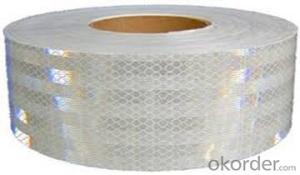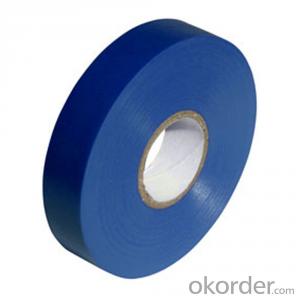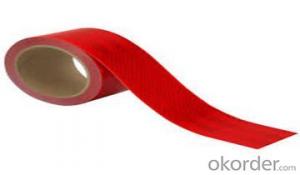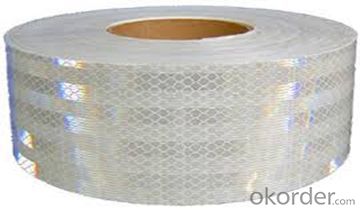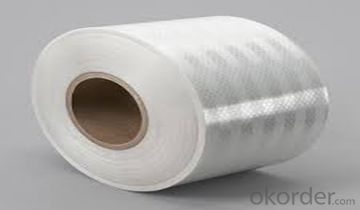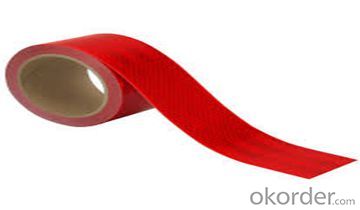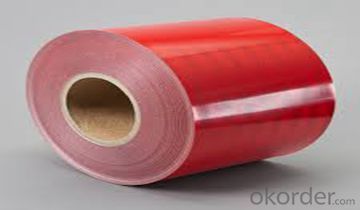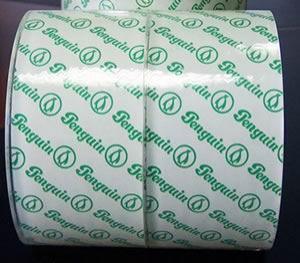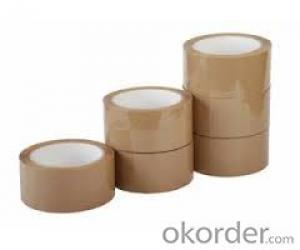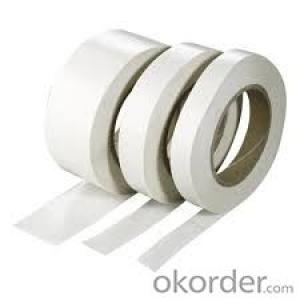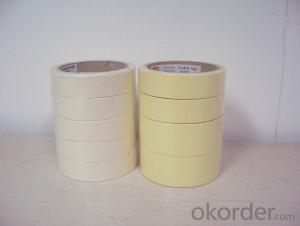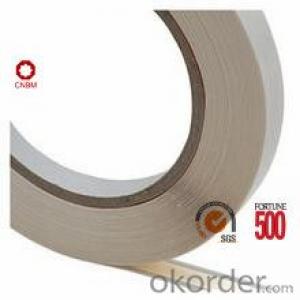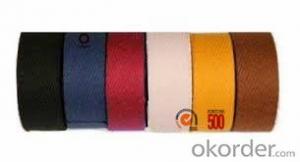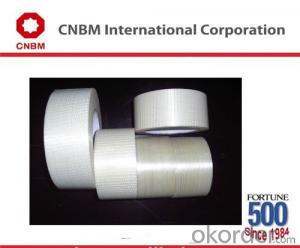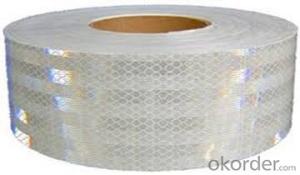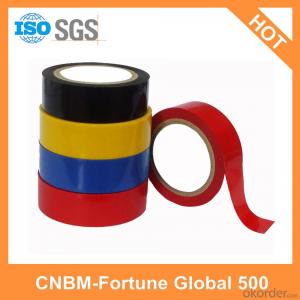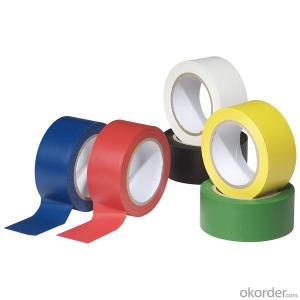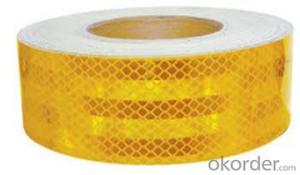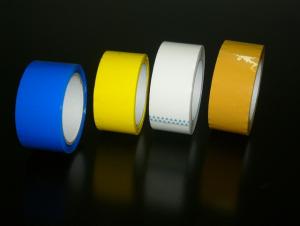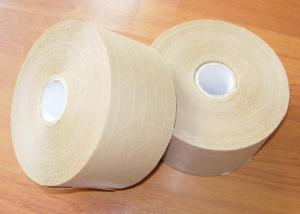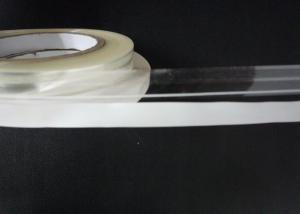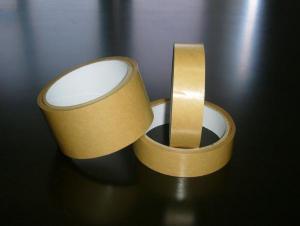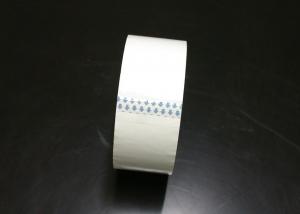3M Reflective Tape Heat Resistant High Visibility Heavy Duty Packaging Tape
- Loading Port:
- Tianjin
- Payment Terms:
- TT OR LC
- Min Order Qty:
- 100 roll
- Supply Capability:
- 500000 roll/month
OKorder Service Pledge
OKorder Financial Service
You Might Also Like
1.Product specification
Name | Heat reflective fabric |
Model | H3-1143 |
Backing fabric | PES |
Coefficient of retroreflection | R>= 400 |
Color | Silver |
Washing | 25 cycles at 60 °C |
Standards | EN471; ANSI107;ISO9001 |
2.Packaging & Delivery
Packaging Details:
5 Cm Width, 100 Meters / Roll, 16 Roll / CTN
Delivery Detail:
Shipped in 20 Days after payment received
3.Product show
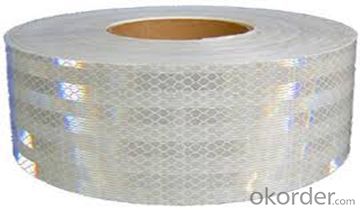
4.Why choose us
China National Building Material Group Corporation(CNBM), estiblished in 1984, as the largest group corporation of building materials in China. It ranked the 267th among the global FORTUNE 500 CORPORATIONS. And it's a China state-owned enterprise, ranked the 143 large-scale groups under the administration of the state-owned Assets supervision and administration commission of the state council.
With thelargest geosynthetics base about 667000m2 in China and have about 120production lines for all geo materials. For geotextile, our production capacity each day can be 300,000m2. We warmly welcome your order and visit. CNBM guarantee good quality and serivce with comptetitive prices.
5.Our service
(1)24 hours prompt reply by email or telephone or messenger.
(2)Standard size have stock, immediately delivery once your purchase
(3)10 days delivery containers for out of stock
(4)Can combine containers with multiple insulation products for your different demand
(5)No quantity limit, from 1 rolls to full container, at your choose and demand!
- Q: What are the considerations for using packaging tape on painted surfaces?
- When using packaging tape on painted surfaces, it is important to consider the type of paint used and its durability. Some paints may not adhere well to the tape, causing it to peel off and damage the surface. Additionally, strong adhesive tapes can leave behind residue or even strip off the paint when removed. Therefore, it is advisable to test a small inconspicuous area before applying the tape extensively and to opt for low adhesive or painter's tape for better results.
- Q: Can packaging tape be used for sealing poly mailers?
- Yes, packaging tape can be used for sealing poly mailers. Packaging tape is commonly used to seal a variety of packaging materials, including poly mailers. It provides a strong and secure seal that prevents the contents from falling out or being tampered with during transit. However, it is important to ensure that the tape is applied properly and securely to ensure the integrity of the seal. Additionally, it is recommended to use a high-quality packaging tape that is designed for secure sealing to ensure the best results.
- Q: Can packaging tape be used for sealing plastic storage baskets?
- Yes, packaging tape can be used for sealing plastic storage baskets. Packaging tape is designed to be strong and adhesive, making it suitable for securing and sealing various types of materials, including plastic. By using packaging tape, you can effectively seal the openings or seams of plastic storage baskets, keeping the contents secure and protected. However, it is important to note that the longevity and effectiveness of the seal may depend on the quality and durability of the specific packaging tape used. Additionally, it is recommended to clean and dry the surface of the plastic storage baskets before applying the tape to ensure proper adhesion.
- Q: Can packaging tape be used for sealing ceramic items?
- Yes, packaging tape can be used for sealing ceramic items. It can provide a temporary seal and hold the pieces together, but it may not be as effective or long-lasting as specialized ceramic adhesives or sealants.
- Q: For the moment the yellow rubber stamp [] how to use paper and pen, pen parts packaging tape?
- Circle, circle, lap, wrap the tail and cut off the excess!
- Q: Can packaging tape be used for sealing plastic storage bins?
- Indeed, plastic storage bins can be effectively sealed using packaging tape. The tape is specifically engineered to possess robust adhesion, making it an ideal choice for securing and sealing a wide range of materials, including plastic bins. Its dependable and long-lasting seal guarantees the security and protection of the bin's contents. Nevertheless, it is crucial to carefully and firmly apply the tape in order to achieve a tight seal. Moreover, it is advisable to utilize a high-quality packaging tape that is specifically tailored for the intended purpose to obtain the best sealing outcomes.
- Q: Can packaging tape be used for sealing cosmetic or beauty products?
- Yes, packaging tape can be used for sealing cosmetic or beauty products. However, it is not the ideal choice as it may not provide the aesthetic appeal and professional finish that specialized packaging materials designed for beauty products offer.
- Q: How does packaging tape perform in freezing temperatures?
- Packaging tape exhibits distinct behavior when subjected to freezing temperatures as opposed to normal room temperatures. The freezing cold can have a negative impact on the performance of packaging tape by reducing its adhesiveness and flexibility. The tape's adhesive may turn brittle, causing it to lose its ability to adhere effectively to surfaces, resulting in inadequate adhesion. Furthermore, the tape itself may become stiffer and more challenging to manipulate, thereby increasing the difficulty of tearing or cutting it. These circumstances pose difficulties when sealing packages or boxes in freezing temperatures. Hence, it is advisable to utilize specialized packaging tapes specifically designed to endure low temperatures when packaging items in freezing conditions.
- Q: Can packaging tape be used for sealing packages for shipping?
- Yes, packaging tape can be used for sealing packages for shipping. Packaging tape is specifically designed to securely seal packages and keep them intact during transit. It provides a strong and durable bond that can withstand the rigors of shipping and handling. Whether you are shipping small or large packages, packaging tape is an essential tool to ensure that your items are properly sealed and protected during transportation.
- Q: Can packaging tape be used for sealing storage containers?
- Yes, packaging tape can be used for sealing storage containers.
Send your message to us
3M Reflective Tape Heat Resistant High Visibility Heavy Duty Packaging Tape
- Loading Port:
- Tianjin
- Payment Terms:
- TT OR LC
- Min Order Qty:
- 100 roll
- Supply Capability:
- 500000 roll/month
OKorder Service Pledge
OKorder Financial Service
Similar products
Hot products
Hot Searches
Related keywords
